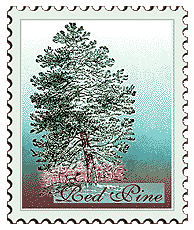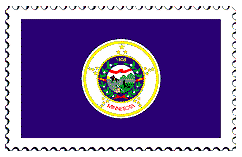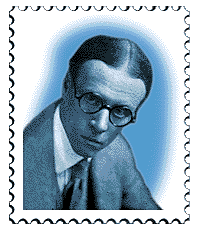
State Flower:
Lady's Slipper

State Bird:
Loon

State Tree:
Red Pine

State Flag:
Minnesota's flag shows the State seal: a large star representing the north star, and 19 smaller stars indicating Minnesota as the 19th State admitted to the union. The French words "L'Etoile du Nord" translate as "The North Star". The date of 1819 is when the first settlement was established; 1858 is when Minnesota was admitted as a state; and 1893 is when the State flag was adopted. There is also an image of a settler plowing his field and an Indian riding into the sunset. The ax in the tree stump and the pine trees stand for lumbering and the abundance of the State tree, the Red Pine. Framing the seal is the Lady's Slipper, the State flower.

Famous Person:
Sinclair Lewis
Sinclair Lewis was born on February 7, 1885 in a small town called Sauk Centre. He graduated from Yale and became a reporter before publishing his first novel, "Our Mr. Wrenn," which many critics loved, but few people bought. To earn a living, he wrote for Saturday Evening Post and Cosmopolitan magazines, but his real dream was to be a serious novelist. His reputation as a novelist soared in 1920 with the publication of "Main Street," a story about people in a small town much like Sauk Centre. The story was a double satire against small town thinking and lofty intellectualism. Two years later, he published "Babbitt" about a small town American businessman whose extreme conformity swallows up any shred of personal identity. The term Babbitt soon came to mean a middle-aged, puffed up, self-satisfied, small time businessman. Following the publication and success of Babbitt, were "Arrowsmith," a satire on the medical profession, and "Elmer Gantry" an attack on the Protestant Church. In 1930 Lewis reached his dream of becoming a serious novelist: he was the first American to win the Nobel Prize for Literature.